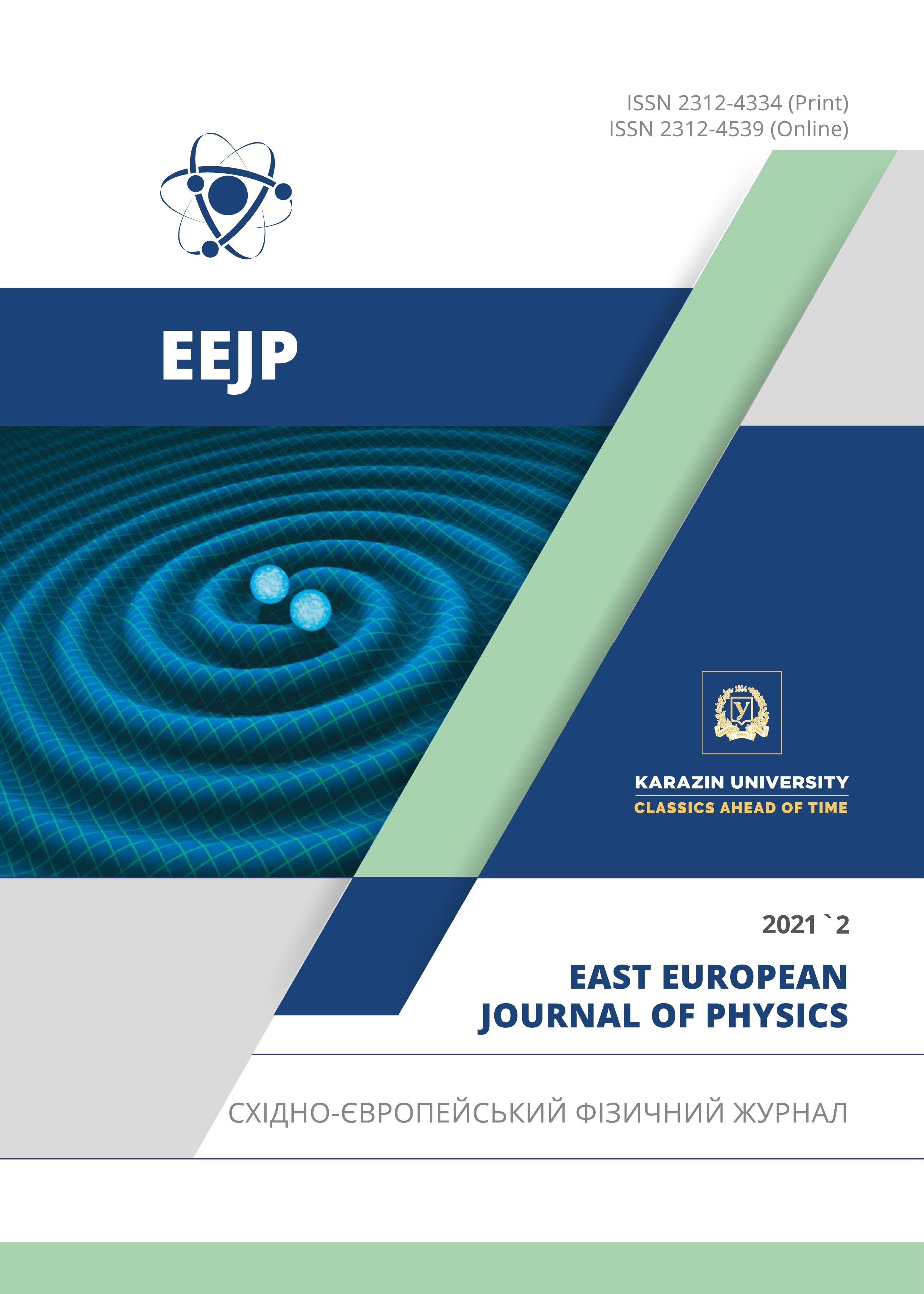Polarization Effects in the Reaction d+eˉ → d+eˉ
Abstract
The differential cross section and polarization observables for the elastic reaction induced by deuteron scattering off electrons at rest, are calculated in the one-photon-exchange approximation. The following polarization observables were calculated: 1- the analyzing powers (asymmetries) due to the tensor polarization of the deuteron beam, 2 - the spin correlation coefficients caused by the arbitrarily polarized electron target and the vector polarized deuteron beam, 3 - the coefficients of the polarization transfer from the arbitrarily polarized target electron to the recoil electrons. The differential cross section and polarization observables have been expressed in terms of the deuteron electromagnetic form factors: (charge monopole), (magnetic dipole) and (charge quadrupole). Numerical estimations are given for the analyzing powers (asymmetries) due to the tensor polarization of the deuteron beam. They are calculated as functions of the deuteron beam energy for some values of the scattering angle (the angle between the deuteron beam and the recoil electron momenta). For the numerical calculation we use the existing phenomenological parametrization of the deuteron electromagnetic form factors. It turns out that the analyzing powers (asymmetries) are increasing with the growth of the deuteron beam energy and they have appreciable sensitivity to the value of the scattering angle. The specific interest of this reaction is to investigate the possibility to use this reaction for the measurement of the polarization of the high energy deuteron beams.
Downloads
References
G. Adylov at al., Phys. Lett. B51, 402(1974), https://doi.org/10.1016/0370-2693(74)90239-1.
E. B. Dally at al., Phys. Rev. Lett. 39, 1176(1977), https://doi.org/10.1103/PhysRevLett.39.1176.
E. B. Dally at al., Phys. Rev. Lett. 48, 375(1982), https://doi.org/10.1103/PhysRevLett.48.375.
E. B. Dally at al., Phys. Rev. Lett. 45, 232(1980), https://doi.org/10.1103/PhysRevLett.45.232.
S. R. Amendolia et al. ( NA7), Nucl. Phys. B277, 168 (1986), https://doi.org/10.1016/0550-3213(86)90437-2.
S. R. Amendolia et al., Phys.Lett. B146, 116(1984), https://doi.org/10.1016/0370-2693(84)90655-5.
G. Abbiendi(INFN, Bologna),C.M. Carloni Calame(INFN, Pavia), U. Marconi(INFN, Bologna), C. Matteuzzi(INFN, Milan Bicocca), G. Montagna(Pavia U. and INFN, Pavia) et al., Eur. Phys. J. C77,139 (2017), https://doi.org/10.1140/epjc/s10052-017-4633-z.
Rene Reifarth and Yuri A. Litvinov, Phys. Rev. ST Accel. Beams 17, 014701 (2014), https://doi.org/10.1103/PhysRevSTAB.17.014701.
M. P. Taggart at al., Phys. Lett. B798, 134894(2019), https://doi.org/10.1016/j.physletb.2019.134894.
M. P. Williams at al., Phys. Rev. C102, 035801(2020), https://doi.org/10.1103/PhysRevC.102.035801.
Nguyen Tri Toan Phuc, Kazuki Yoshida and Kazuyuki Ogata, Phys. Rev. C100, 064604 (2019), https://doi.org/10.1103/PhysRevC.100.064604.
M. Holl at al., Phys. Lett. B795, 682 (2019), https://doi.org/10.1016/j.physletb.2019.06.069.
I.V. Glavanakov, Yu.F. Krechetov A.P. Potylitsyn, G.M. Radutsky, A.N. Tabachenko et al., Nucl.Instrum.Meth. A381, 275 (1996), https://doi.org/10.1016/S0168-9002(96)00714-0.
G. I. Gakh, A. Dbeyssi, D. Marchand, E. Tomasi-Gustafsson and V. V. Bytev, Phys. Rev. C84, 015212 (2011), https://doi.org/10.1103/PhysRevC.84.015212.
G. I. Gakh, A. Dbeyssi, E. Tomasi-Gustafsson, D. Marchand and V. V. Bytev, Phys. Part.Nucl. Lett. 10, 393 (2013), https://doi.org/10.1134/S1547477113050099.
G. I. Gakh, M.I. Konchatnij, N.P. Merenkov and E. Tomasi-Gustafsson, Phys. Rev. C95, 055207 (2017), https://doi.org/10.1103/PhysRevC.95.055207.
G. I. Gakh, M.I. Konchatnij, N.P. Merenkov and E. Tomasi-Gustafsson, Phys. Rev. C98, 045212 (2018), https://doi.org/10.1103/PhysRevC.98.055212.
E. Tomasi-Gustafsson, G. I. Gakh and C. Adamuscin, Phys. Rev. C73, 045204 (2006), https://doi.org/10.1103/PhysRevC.73.045204.
Authors who publish with this journal agree to the following terms:
- Authors retain copyright and grant the journal right of first publication with the work simultaneously licensed under a Creative Commons Attribution License that allows others to share the work with an acknowledgment of the work's authorship and initial publication in this journal.
- Authors are able to enter into separate, additional contractual arrangements for the non-exclusive distribution of the journal's published version of the work (e.g., post it to an institutional repository or publish it in a book), with an acknowledgment of its initial publication in this journal.
- Authors are permitted and encouraged to post their work online (e.g., in institutional repositories or on their website) prior to and during the submission process, as it can lead to productive exchanges, as well as earlier and greater citation of published work (See The Effect of Open Access).








